Murals and More in Chemainus
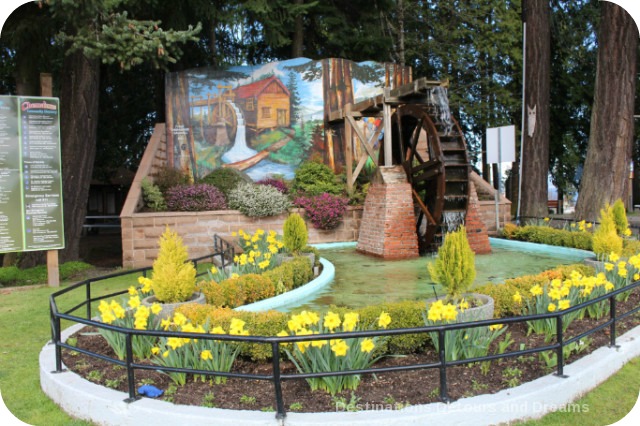
The vibrant murals and charm of Vancouver Island’s “Muraltown”
The town of Chemainus, located in the Cowichan Valley on Vancouver Island’s East Shore, is known as “Muraltown”. This charming town, with a population of about 4,000, has over 40 large and vivid murals scattered throughout town.
About Chemainus
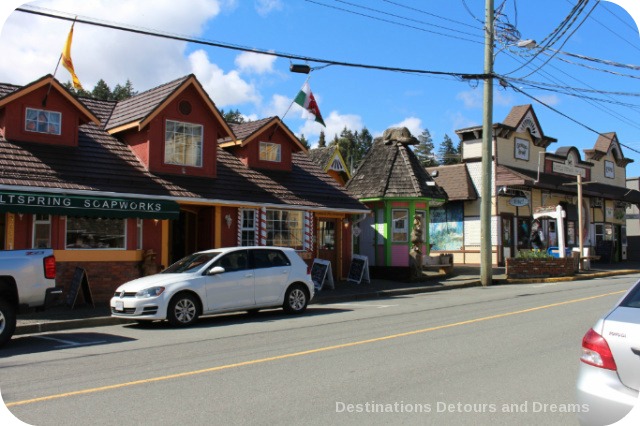
The area around Chemainus, British Columbia has been the home of the Coast Salish for thousands of years. The current town was founded in 1858. Mining, fishing and forestry were the original industries. A sawmill opened in 1862. The community soon became dependent on a single employer.
In 1981, the town started a downtown revitalization project with the aid of a province-wide redevelopment fund. Planters and benches were installed and public spaces and parking lots improved. There were five murals in 1982.
In 1983, the sawmill shut down and the the town faced an uncertain future. Residents wanted to hold onto their roots in the town and continued with the beautification of downtown. The Chemainus Festival of Murals was born. Murals were painted on the outside of buildings to draw tourists to town. Even though the mill was rebuilt and reopened in 1985, the murals led to a more diversified economic base and brought other services and tourist activities to town. Today Chemainus is a picturesque, creative community with galleries, shops and cafés. The town has trademarked itself as The Little Town That Did ©.
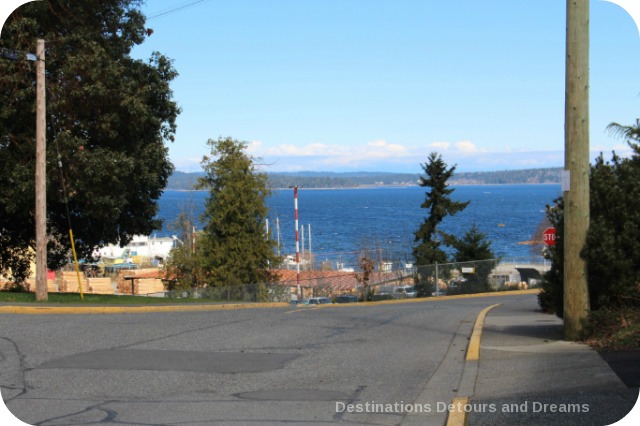
A Sampling of Murals
The murals depict the town’s history and culture.
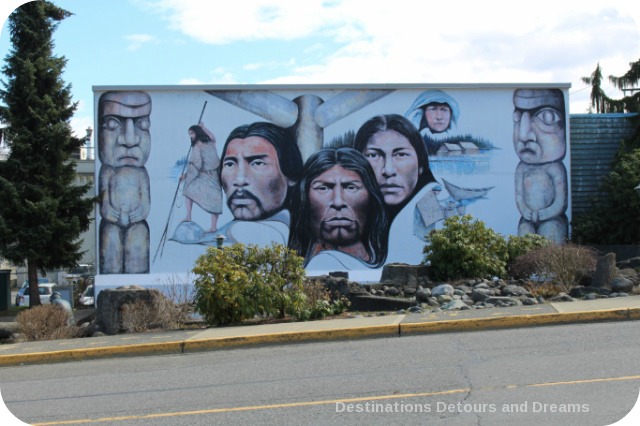
Native Heritage is based on figures from the past and present. A dozen bands of Cowichan people, part of the Coast Salish language group, occupied the Cowichan and Chemainus Valleys for many centuries before Europeans settled here.
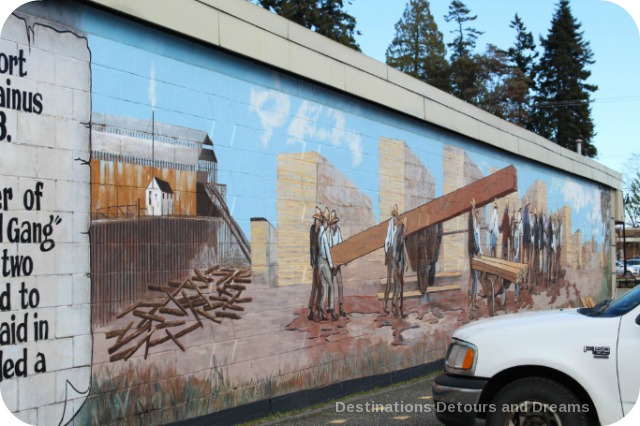
Many Chinese came to Canada’s west coast in the 1800s as labourers. Some settled in Chemainus to work in the lumber industry. In the mural 1884 Chinese Bull Gang, a Chinese bull gang struggle to move a large timber to a ship. (“Bull gang” is a term for a crew of unskilled labourers.)
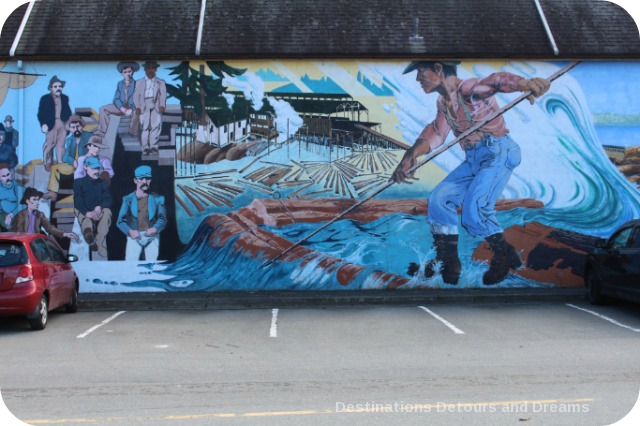
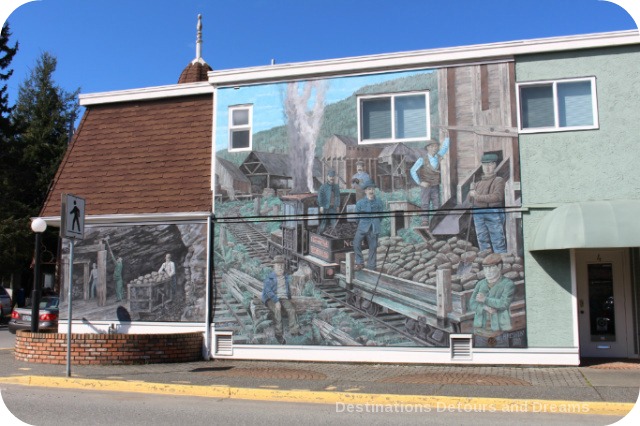
In 1897, Harry Smith and a partner staked the famous Lenora copper claim, named after Smith’s only daughter. Mt. Sicker grew to 400 people. The mine closed in 1907 when copper prices plummeted. By 1908, Mt. Snicker was virtually a ghost town.
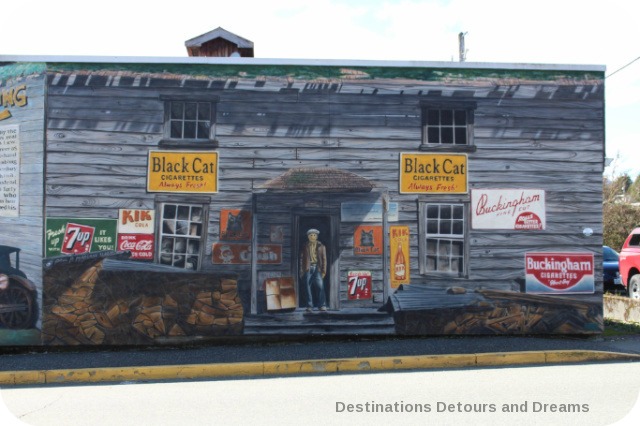
In 1915, Fong Yen Lew, known as Hong Hing, opened a business which started as a laundry, but later sold groceries, chickens and second-hand goods. He eventually expanded into bootlegging and running a gambling house. The opening of a government liquor store in the 1950s was the beginning of the end of the business. The original building was declared a fire trap and demolished. This mural looked so real I almost wanted to walk up the steps and into the building.
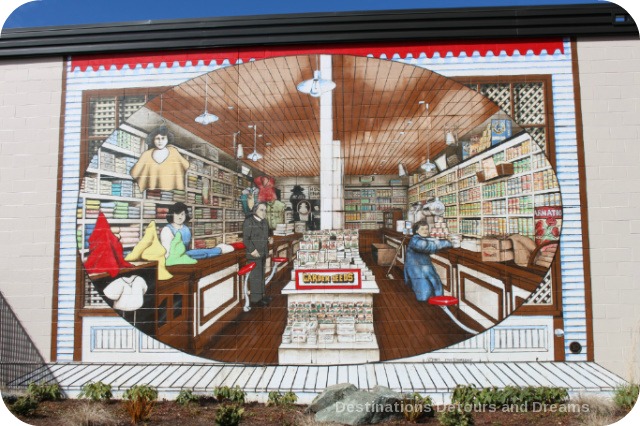
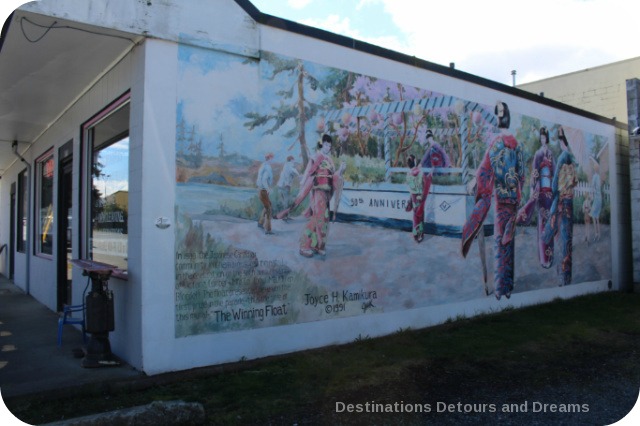
The Winning Float depicts an event from June 30, 1939 when the Japanese-Canadian community had the winning float in a record-breaking parade which stretched over one kilometre. The parade marked the start of a two-day celebration for the Golden Jubilee of the Victoria Lumber & Manufacturing Co. Ltd. By 1942, there was not a single Japanese-Canadian resident left in the community due to the forcible relocation to internment camps during World war II.
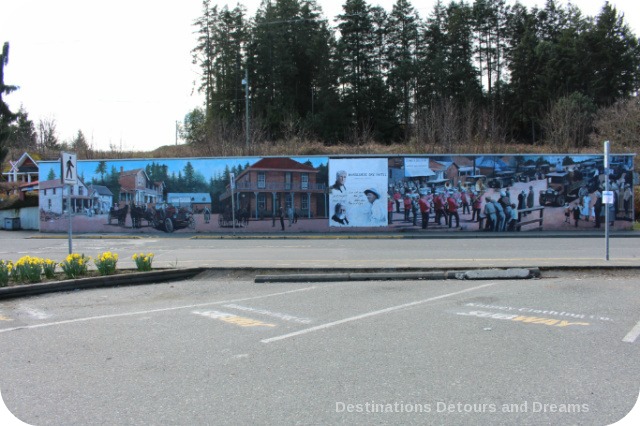
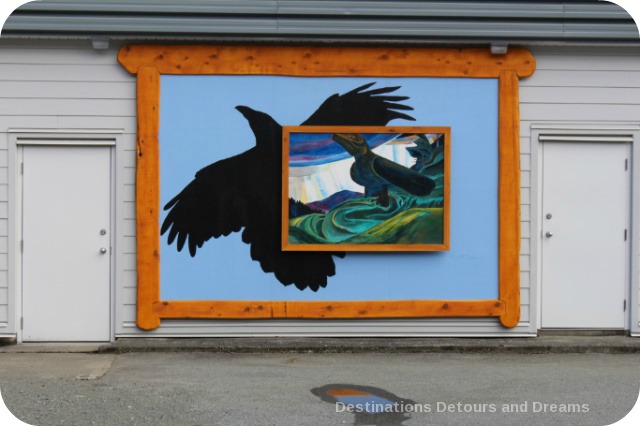
In additional to the historic murals, there are also a series of murals inspired by Emily Carr, such as The Keeper of Secrets. The raven is an important symbol in First Nations cultures of the Northwest Coast. Known as the Keeper of Secrets, the raven possessed knowledge of hunting and the world and shared these with First Nations peoples. The inset in the mural by Paul Marcano is a reproduction of Emily Carr’s Big Raven. Emily Carr was a writer and artist from Victoria, British Columbia. She lived from 1871 to 1945. Her main themes were First Nations cultures and the western landscape. She was an independent woman dedicated to her art. She travelled frequently and unaccompanied to isolated First Nations villages, something not typically done by women in that time period.
There are also a few sculptures in town, like the Waterwheel Sculpture by Karl Schulz shown in the photo at the top of this post. It is working replica of the original Chemainus waterwheel. The sculpture I liked the most was Three Generations by Sandy Clark. It is a set of three fibreglass figures with a painted backdrop behind them.
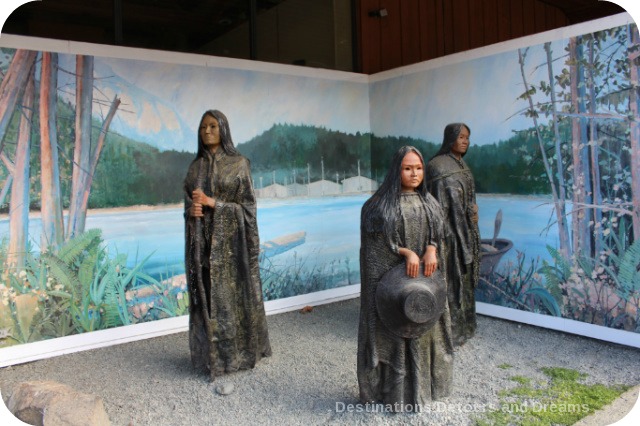
More to See and Do
Chemainus is walkable. There are a number of galleries and interesting shops to browse through, and cafés, bistros and bakeries to stop at for refreshment. We had a delicious lunch at Owl’s Nest Bakery and Bistro, but that is not your only option. There are a number of varied dining places.
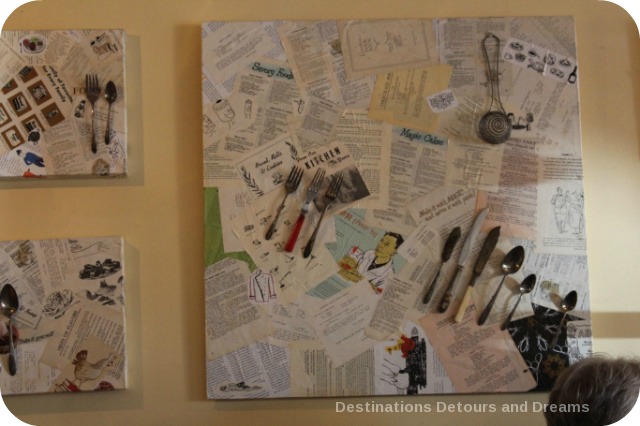
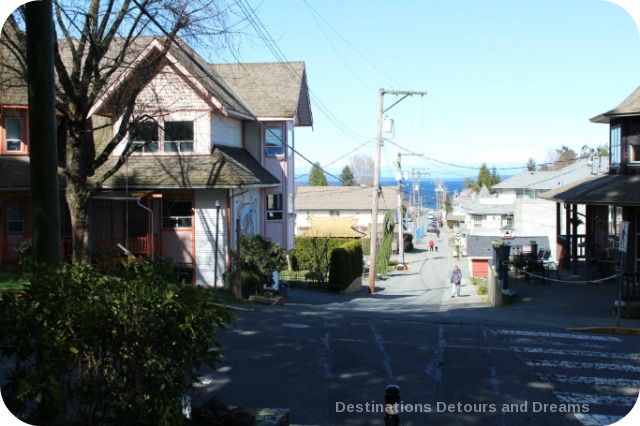
In Old Town Chemainus, which is just a few blocks from the downtown core, you’ll find a variety of Victorian homes. You will also find more shops and restaurants and murals.
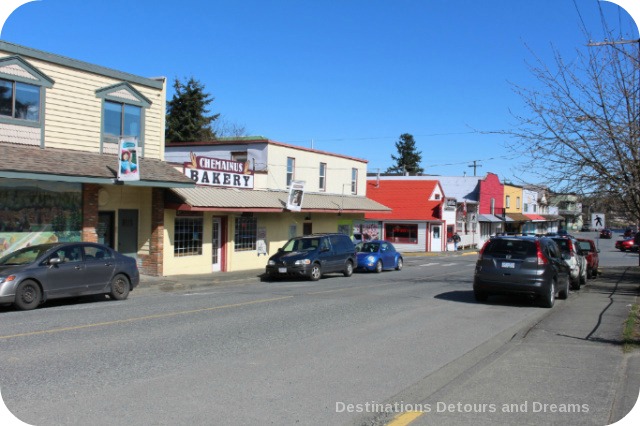
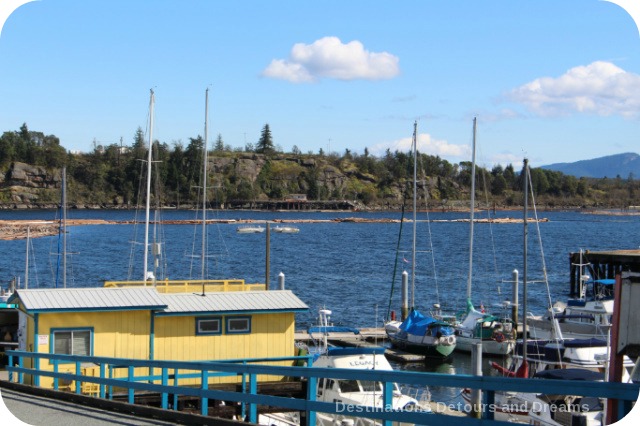
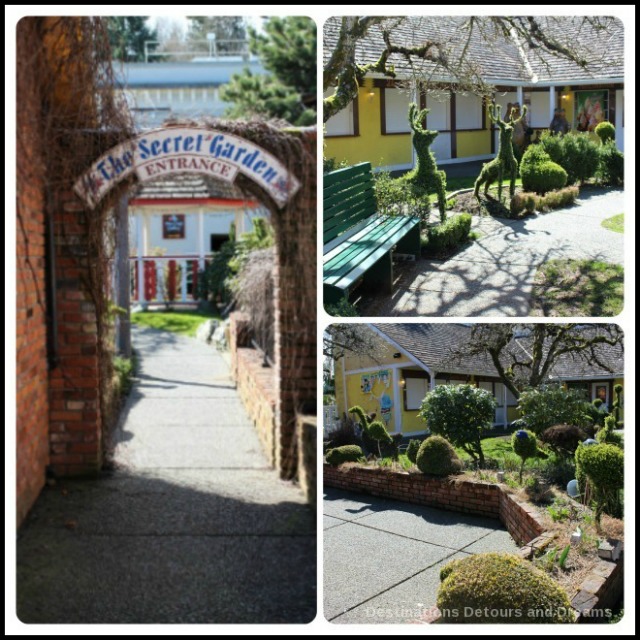
Visitor Information
Chemainus is 80 kilometres north of Victoria. You take the Trans-Canada Highway (BC) north for approximately 75 kilometres and turn off at Henry Road which connects to Highway 1A into Chemainus. The drive will take about an hour and a quarter. You can get maps of the murals at the Visitor Centre at 9799 Waterwheel Crescent. Or you can use the information provided on the Chemainus Festival Of Murals Society site. Or you can just wander through town following the yellow footprints.
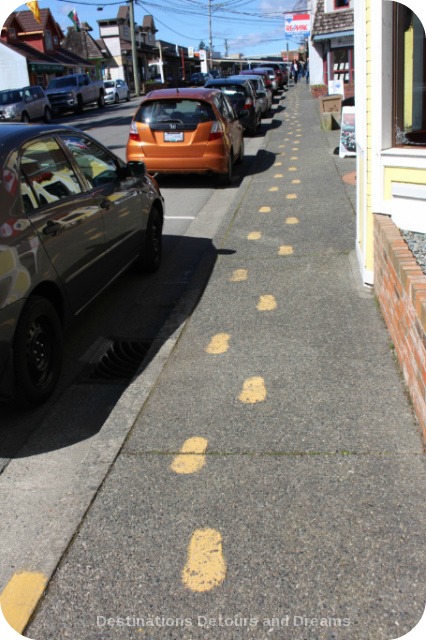
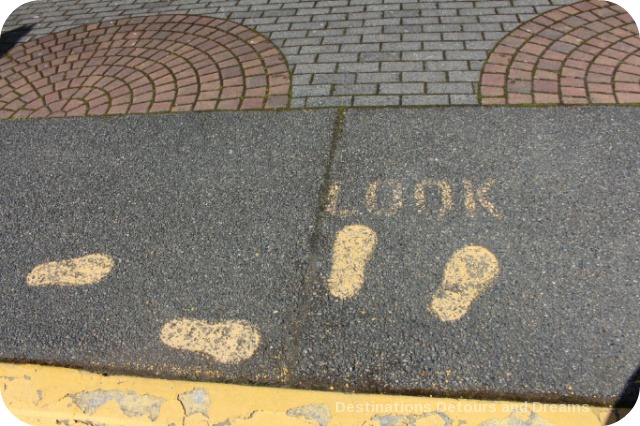
If you enjoyed this post, sign up for Destinations Detours and Dreams monthly e-newsletter. Get behind the scenes information and sneak peeks ahead in addition to a recap of the month’s posts.
PIN IT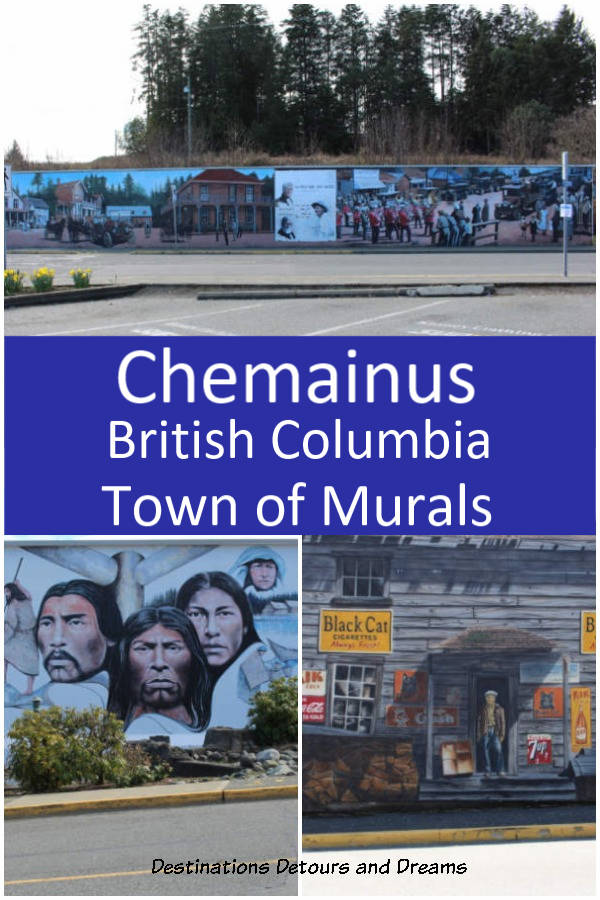

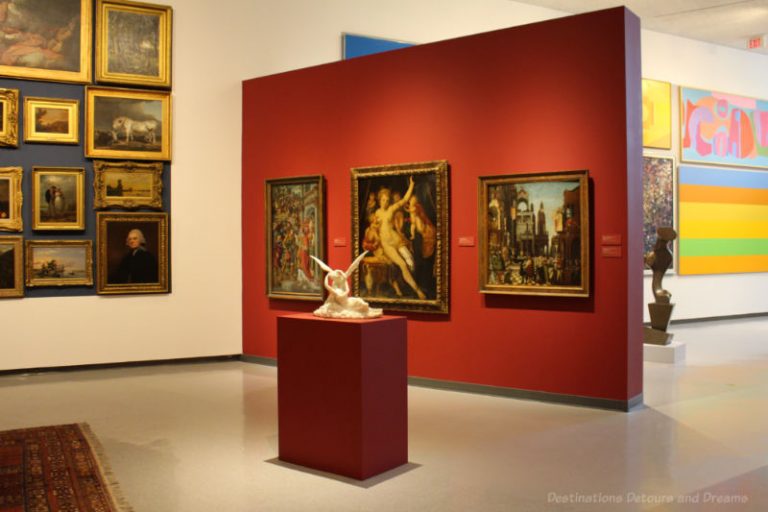
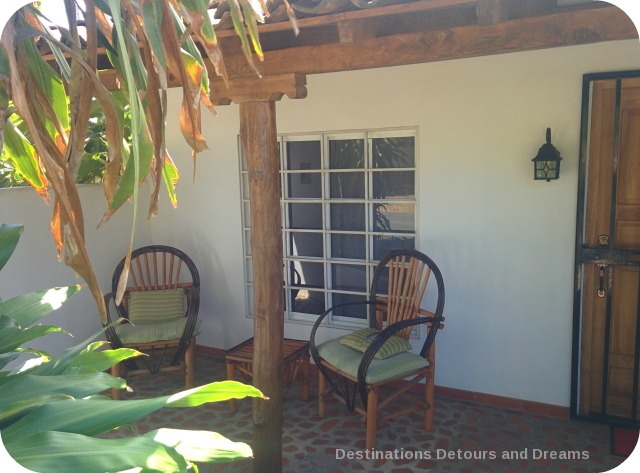
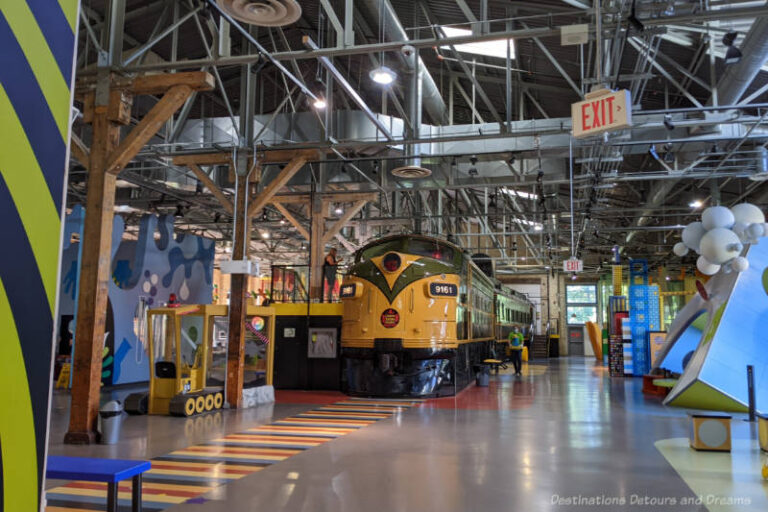
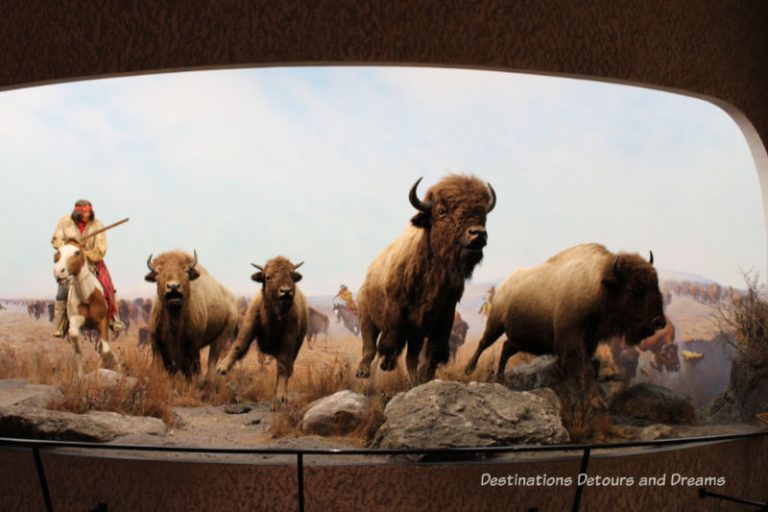
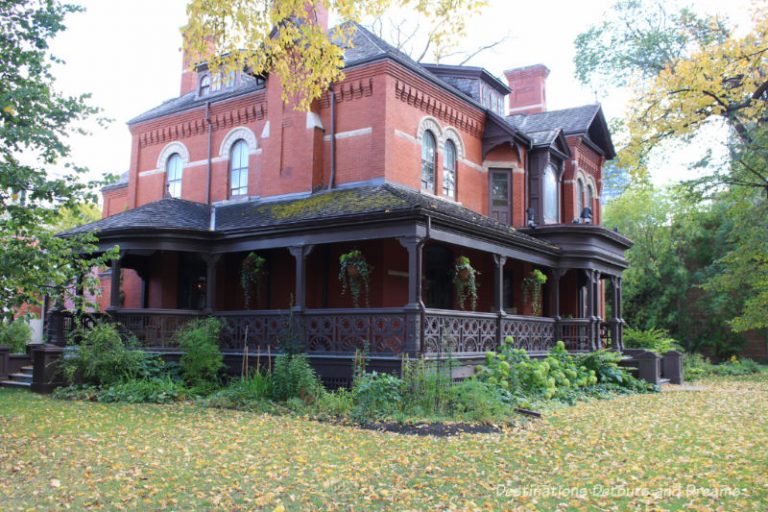
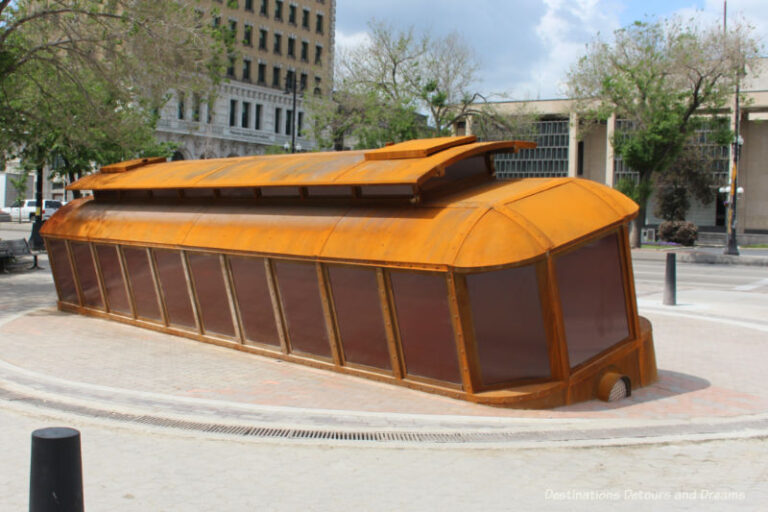
How cool. The murals are stunning. Wouldn’t it nice if more towns did something like this.
Susan, I think murals on buildings are becoming more prevalent in general, but few towns go into it in as big a way as Chemainus.
I’ve been enjoying the public art posts. I’m sure these murals are even more impressive when you can stand before them and appreciate their size.
Ken, some murals are quite large. I couldn’t easily get the whole mural in a photograph.
I love public art, especially murals, and it has become more of a “thing” world wide. In my home city of Philadelphia there is a vibrant mural arts program which is active even in blighted areas. It was started as a very successful anti-graffiti initiative in 1984 and the city now boasts over 3,600 murals. From your post, it looks like Chemainus has done a good job of reinvention via the mural art form.
Suzanne, I agree that murals have became more of “thing” world wide, which is pretty cool. I don’t think there were as popular when Chemainus started doing them in the 1980s.
I always enjoy exploring street art so I’d love to go to Chamainus. I particularly like the Native Heritage picture.
Karen, the Native Heritage was one of my favourites too. Also, the Hong Hing Waterfront Store. When I first looked at that one, it looked like that was actually the storefront, not a mural.
I love murals. I heard about Chemainus when I was writing an article about our murals here in Vancouver, WA.
Elizabeth, I love murals too. It’s nice to see more cities and towns creating them
I, too, love Chemainus, Donna. Such a small town, but so big on character.
Doreen, definitely big on character.
Lovely and what a story behind “The Little Town That Did.” It’s obvious that the town is thriving! I was especially interested in your comment that Canada also had internment camps for its citizens of Japanese heritage. I’m sure that there are many fascinating stories – sad, ugly and inspiring – behind each mural. Anita
Anita, there are certainly stories of all kinds behind each mural. I think it’s worth taking some time to find them – it makes the mural experience richer.
Chemainus is so underrated. Such a great little town.
Nathalie, I’m glad we were able to get to Chemainus on this trip.
I’ll have to keep Chemainus on my list since it’s within a doable vacation drive for me. I always love public art, and it’s even better when it so directly ties into the spirit of a community.
Jeri, the entire Cowichan Valley and the Victoria area has a lot of great places to visit and things to do – scenic places, wineries, etc. If you wind up going, get in touch beforehand and I can offer a number of suggestions.
Chemainus reminds me of Bellingham, Washington, which also has a logging history (for a paper mill, in Bellingham’s case). The Native American themes and historical subjects of the murals you’ve shown here are similar to some of the murals in Bellingham.
Rachel, I’ve not been to Bellingham. I will have to check the murals out when I do get there.
Murals are a great way for a town to tell its story and also to attract visitors~
Love the ones in Chemainus.
Irene, I think murals are cool way to illustrate history and culture.
There’s a big mural as you enter Mt Lebanon from Pittsburgh. I’m intrigued by murals and how an artists keeps his/her perspective while working on something so huge. This sounds like a fun town to wander through.